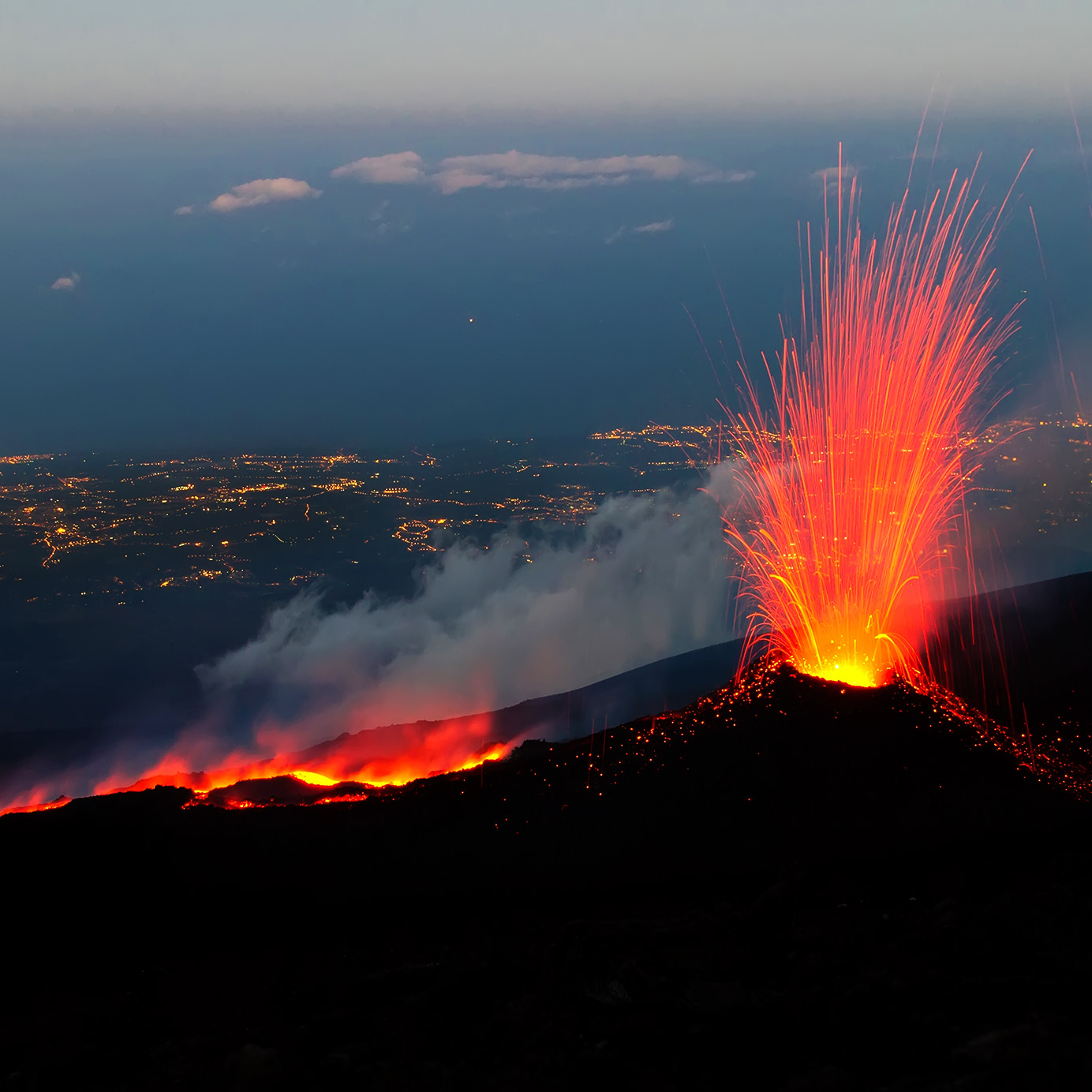Put down the Pinot Noir and step away from the corkscrew. There’s a new light red in town, and — I’m going to say it —it’s better.
Nerello Mascalese isn’t some sommelier favorite that’s hard to pronounce and impossible to find outside of hipster wine bars. It’s the people’s grape of Mount Etna, Sicily, and one of the few varieties that have survived centuries of trends, phylloxera, and volcanic eruptions.
Sicily is no stranger to grapevines, but most of the island’s modern winemaking has focused on bulk production and sweet Marsala. While certain growers were caving to economic pressures and replanting ancient vineyards with high-yielding varieties destined for bulk wine, Nerello Mascalese continued to silently thrive. A longtime local favorite, it’s also getting its due beyond the confines of the Mediterranean’s largest island.
In the Sicilian city Catania, one can survey the Mediterranean Sea, smoking Mount Etna, and mainland Italy, all from a single vantage point. The volcano is a constant presence here, referred to with reverence and feminine pronouns. Its steady stream of smoke provides incredible nutrients for the vines and farms in the area, leading many locals to consider Etna akin to Mother Earth.
Nerello Mascalese evolved to suit the crumbly volcanic soils that surround the volcano and vineyards of eastern Sicily. Here, low rainfall and well-drained soils make for a tough vine-growing environment. Like most of the Mediterranean, Etna’s edges are hot and sunny all summer long, but high elevation cools temperatures at night. These otherwise challenging conditions create the ideal ambiance for scraggly Nerello Mascalese vines.
Because of the area’s wild temperature swings, vines are trained in the traditional albarello, or bush method. The fruit stays close to the ground, from which stored heat radiates at night. The strategy means most Nerello Mascalese is still picked by hand from the hillsides.
Climbing up the steep slopes of Mount Etna, the connection between the volcano and its bounty is easy to see. Between wild fennel bushes, chestnut trees, and ancient olive groves, swaths of vines curve upward from soil as black as charcoal. Fist-sized bunches of deeply purple grapes dangle below. The fruit is an interesting mix of intensely sweet juice contrasted with fiercely bitter tannins in the skins, and crunchy brown seeds. It’s an awkward flavor medley in a raw fruit, but forms the perfect trifecta for excellent red wines.
“It’s a strong variety suited to this land,” says Giuseppe Pietradolce, agronomist of Pietradolce, a vineyard on Mount Etna’s northern slopes. He notes that Nerello Mascalese is one of the few varieties that survives without irrigation in area vineyards.
Pietradolce’s 80-year-old vines are interplanted with fruit trees and the occasional Nerello Cappuccio vine. Eventually, they are co-fermented into expressive, ethereal, ageable wines.
Like Pinot Noir and Nebbiolo, Nerello Mascalese is light in color and body but big on flavor, tannins, and aromatics. Crimson in color, Pietradolce’s Archineri bursts with notes of dried rose petals, tart cherry, and sage. Its simultaneously delicate and flavorful, with red fruit that leads to a lingering, minerally finish.
Taste by taste, no two Nerello Mascalese wines are alike. Pietradolce’s line spans delicate Archineri to bold, berry-scented and tannic Barbagalli. All are balanced by a light body and delicate mouthfeel.
“This is the possibility of Etna,” Parlavecchio says. “Three separate, different wines from within 300 meters of each other.”
Just 10 minutes from Pietradolce, Firriato‘s estate spreads along the hillsides. Many of the vines here are over a century old; some even predate the 19th-century phylloxera epidemic that required winemakers across Europe to replant their vineyards. Etna’s soils are so dry and sandy at the vines’ root level that the pest can’t live there, which makes Sicily one of the few regions to showcase truly ancient vines. Between the rows, lava flows dating from 1556 snake around the vines, and petrified tree roots emerge from the limbs.
In Firriato’s Sabbie dell’Etna Rosso, Nerello Mascalese takes decidedly chuggable form — bursting with cherry flavors and persistent tannins. This Nerello is ready to party.
From raucous celebrations to five-course dinners to takeout Tuesday, Nerello Mascalese’s many forms make it easy to love. And thanks to increased exports, Nerello Mascalese is easier than ever to find stateside. (It’s typically the main grape in anything labeled “Etna Rosso.”)
As sweater weather approaches and rosé takes a backseat to warming reds, give your palate a chance to explore. Nerello Mascalese deserves a place in your vino rotation, so don’t be afraid to give that well-worn corkscrew a new turn.
